How to fix the washing machine with 4E - 4C - 4C1 - 5C error?
If your washing machine is experiencing problems, it may show a code on the display. Each code indicates a different issue with your appliance and can often be fixed without calling an engineer. Use the tables below to identify the cause of your code and any possible solutions.

Note: This help content is only applicable to products purchased from UAE, Qatar, Oman, Bahrain, and Kuwait retailers. If you require help with the products purchased outside of the mentioned countries, contact your local Samsung subsidiary for more information.
4E (4C) ERROR
The 4E (4C) error code indicates that the washing machine has detected a problem with the water supply. The most common reason for this error is a blocked or kinked water supply hose. Try the below troubleshooting steps to resolve it.

A problem with the water supply is usually the result of low water pressure or a low flow rate on the mains water supply to the machine. This means that the water feeding into the machine is not flowing with enough force.
1. Fully power off your washing machine at the mains.
2. Move the machine forward to give access to the water hoses.
3. Check that there are no kinks or bends in the water hose connected to the machine.
Check that the water tap connected to the washing machine is open to full.
Clean the water hose mesh filter at least twice a year to prevent build up. Learn more.
Occasionally, a 4C check code error message may be displayed if there is a blockage in the dispenser drawer, Learn more.
5E (5C) ERROR


A 5E or 5C error code indicates that the washing machine has detected a Drainage Issue. The most common reason for this error is a blocked filter or a kinked drain hose. You should also check that the drain hose has been installed properly and clean the hose thoroughly to remove any blockages that may be preventing your washing machine from draining properly.
Warning: If a cycle with hot water temperature settings was run recently, the water in the washer may be very hot. Allow approximately one hour for the water to cool before performing this procedure to avoid possible injury.
Your washing machine's drain pump is responsible for pumping water out of the main drum so that it can be drained away. The drain pump filter protects the pump by filtering the water that drains out of the drum. However, over time, lint builds up in the filter and small items such as coins, hair clips, or hair can become trapped in the filter. If the filter is clogged, your washing machine may not drain properly.
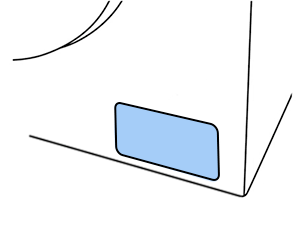
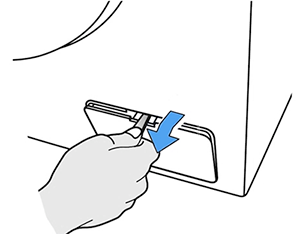
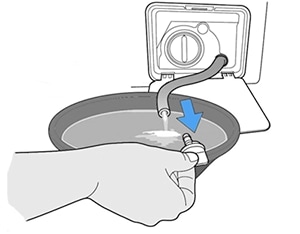


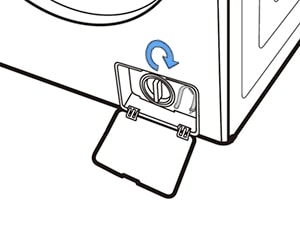

If your machine is having trouble draining, it is important to check that the drain hose has been installed correctly so that the water from your machine can drain away properly. Washing machine's drain hose could be connected to the waste: either via a spigot or via a standpipe.
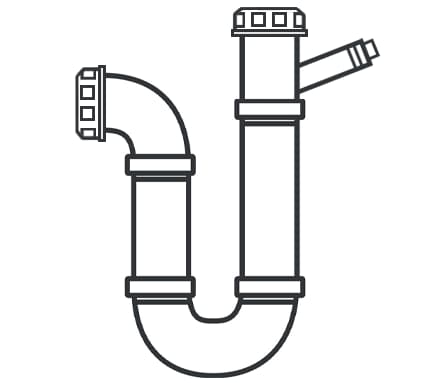
If the drain hose is connected via a standpipe, your washing machine's drain hose simply hooks over an open stand pipe which is connected to the waste pipe.

Follow the instructions below to check that your drain pipe is correctly positioned and installed.
If the drain hose is connected via a spigot:
If you have recently installed your washing machine, make sure that you have removed or cut off the blanking cap.
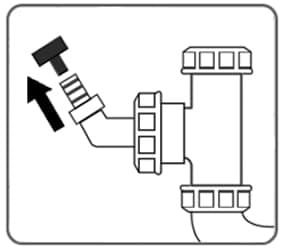
If the drain hose is connected via a standpipe:

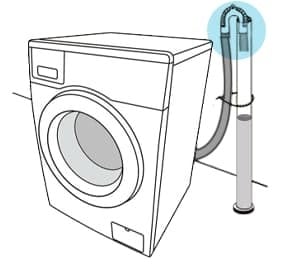

If the drain hose is clogged or blocked, your washing machine might not be able to drain properly. Check the drain hose for blockages and clean it to ensure that the water can drain away.
Note : You might need to use a screwdriver or a wrench to open the clasp that attaches the pipe to the machine.
Note :
- If your washing machine does not work properly after doing all the previous steps, call our contact center to request a service visit.
- to know more about the functions and sections of your washing machine that need to be cleaned continuously, click here.
Thank you for your feedback!
Please answer all questions.